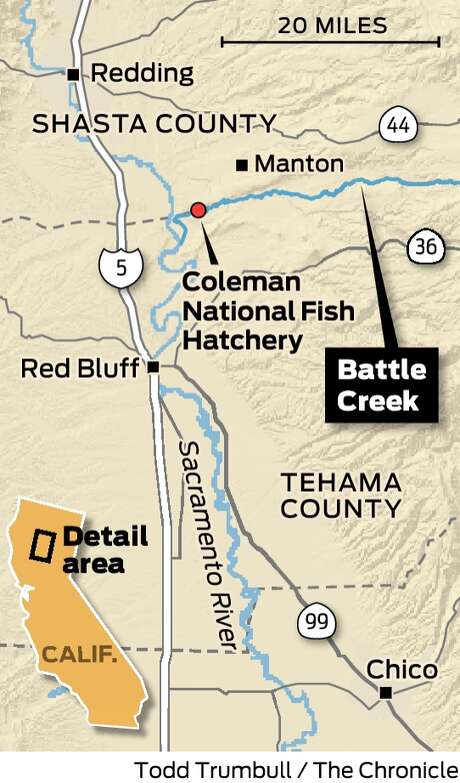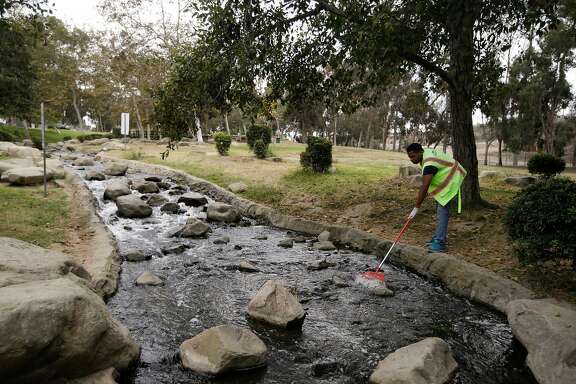 Seeking to stave off the extinction of a storied species, state and federal wildlife officials are releasing 200,000 hatchery-raised salmon into a restored High Sierra creek where once-magnificent winter runs were wiped out over the past century.
Seeking to stave off the extinction of a storied species, state and federal wildlife officials are releasing 200,000 hatchery-raised salmon into a restored High Sierra creek where once-magnificent winter runs were wiped out over the past century.
The releases starting this month of endangered, winter-run chinook into Battle Creek — a Sacramento River tributary that winds through Shasta and Tehama counties — is part of a 19-year effort to rebuild a wild population of the migrating species before the effects of climate change become more pronounced and expected droughts take away the cold mountain water they need to survive.
“Each step we take to re-establish these endangered winter-run chinook salmon is vital and helps us remember that in less than a century a run of salmon nearly a million strong has been reduced to thousands,” said Charlton Bonham, director of the California Department of Fish and Wildlife.
The releases of juvenile salmon over the next two months are part of a strategy that began in 1999 to restore 48 miles of river habitat along the north fork of Battle Creek.
The state wildlife department, in collaboration with the U.S. Fish and Wildlife Service, the Bureau of Reclamation, NOAA Fisheries and Pacific Gas and Electric Co., has spent $100 million so far building fish ladders and screens and removing dams and weirs that block migration on the creek.
The flow of water has already increased tenfold, said Jim Smith, a project leader for the U.S. Fish and Wildlife Service. When the project is completed, he said, workers will have removed five diversion dams and weirs, giving the salmon unimpeded access.
The idea, Smith said, is to build a naturally producing population of salmon in the northern reaches of the creek, where the fish have not been seen in 100 years.
Winter-run chinook are so named because they pass under the Golden Gate Bridge and head toward the Sacramento River mostly in the winter months — between November and May — and complete their three-year life span by breeding in cold water, preferably high in the mountains, from mid-April through August.
The species, also known as king salmon, were once so plentiful in the rivers and creeks of California that legend had it a person could nearly walk across water on the backs of the teeming hordes.
Winter-run salmon filled Battle Creek and the upper reaches of the Sacramento, McCloud and Pit rivers. But the construction of Shasta and Keswick dams, on the Sacramento, as well as several hydroelectric dams along Battle Creek, wiped out the spawning fish, which once numbered close to 1 million in the watershed, officials said.

The winter-run chinook were hit particularly hard because they rely on cold mountain water to sustain them through the summer. Just one fish population remains below Shasta Dam, and it relies completely on cold-water releases from the reservoir. The winter run has been listed under the U.S. Endangered Species Act since 1994.





 Advertising
Advertising